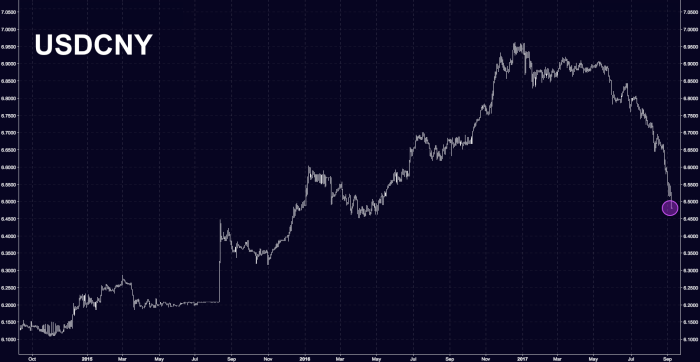
Ok, so China trade data is out for August and it’s important to understand the context, which I’ll briefly run through.
A couple of weaker-than-expected recent fixings (including Friday’s) and concurrent dips notwithstanding, the yuan is riding a truly epic hot streak.
Coming off its best month since revaluation, the onshore yuan closed at 6.4850 on Thursday, the highest level since April 2016:

Meanwhile, the offshore yuan had its best day against the dollar since May yesterday and you’ll recall this comes on the heels of a record-setting stretch that saw USDCNH fall for 14 straight sessions (i.e. a record win streak for the offshore yuan):

There are multiple factors at play here including still decent economic growth (which is holding up in the face of a deleveraging push that many observers assumed would end up choking off growth to the real economy), the perception that the PBoC will not fight back too hard in order to avoid creating market turmoil ahead of the Party Congress, and seemingly successful efforts to curb capital outflows. To that latter point, China’s FX reserves rose for a seventh straight month in August amid the yuan’s best gain in more than 10 years:

As noted above, Friday’s PBoC fix was weaker than expected (read: an attempt to tap the brakes on the FX appreciation).
But given that the central bank has committed to giving the previous day’s price action a greater say in the next day’s fixing (for our purposes here, let’s just try and pretend like the “counter-cyclical adjustment factor” introduced amid the late May/ early June short squeeze didn’t make a mockery of the liberalization push), the reference rate was still set at the strongest level since May 2016. And indeed it wasn’t 10 minutes (give or take) before USDCNH gave back all of the knee-jerk gains on the way to rallying “big league”:

That move came amid a broader selloff in the dollar, which extended losses midway through the overnight session.















